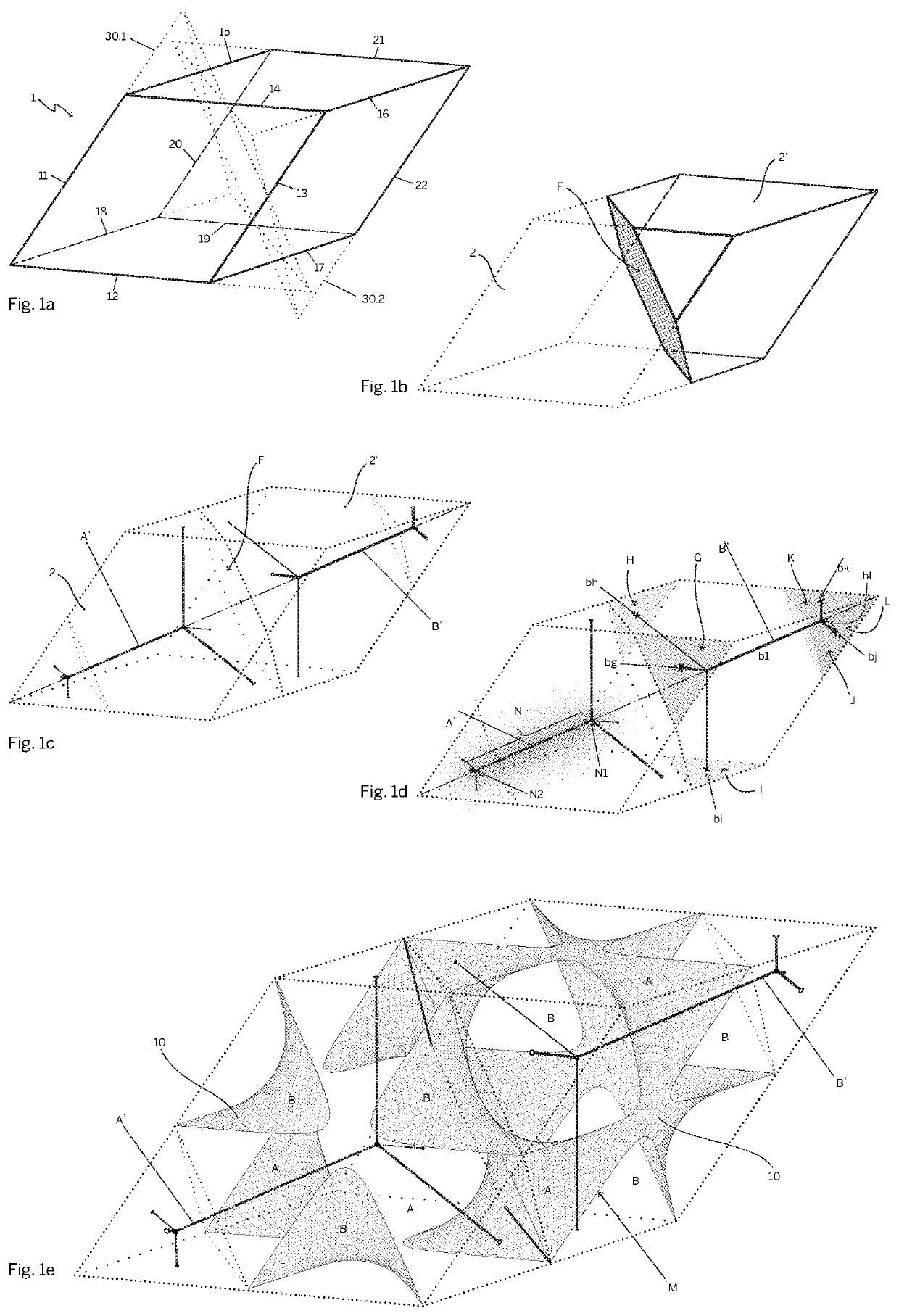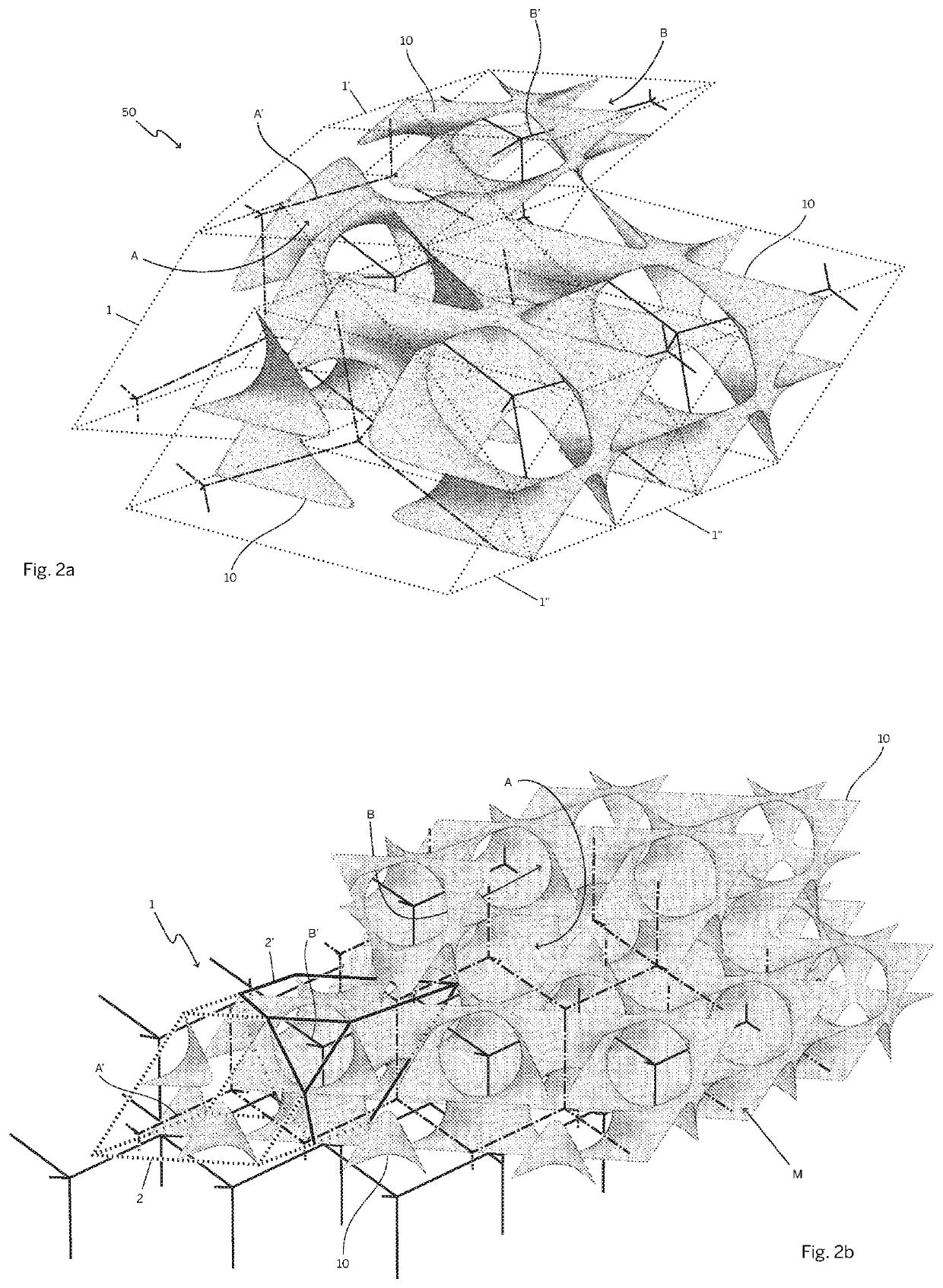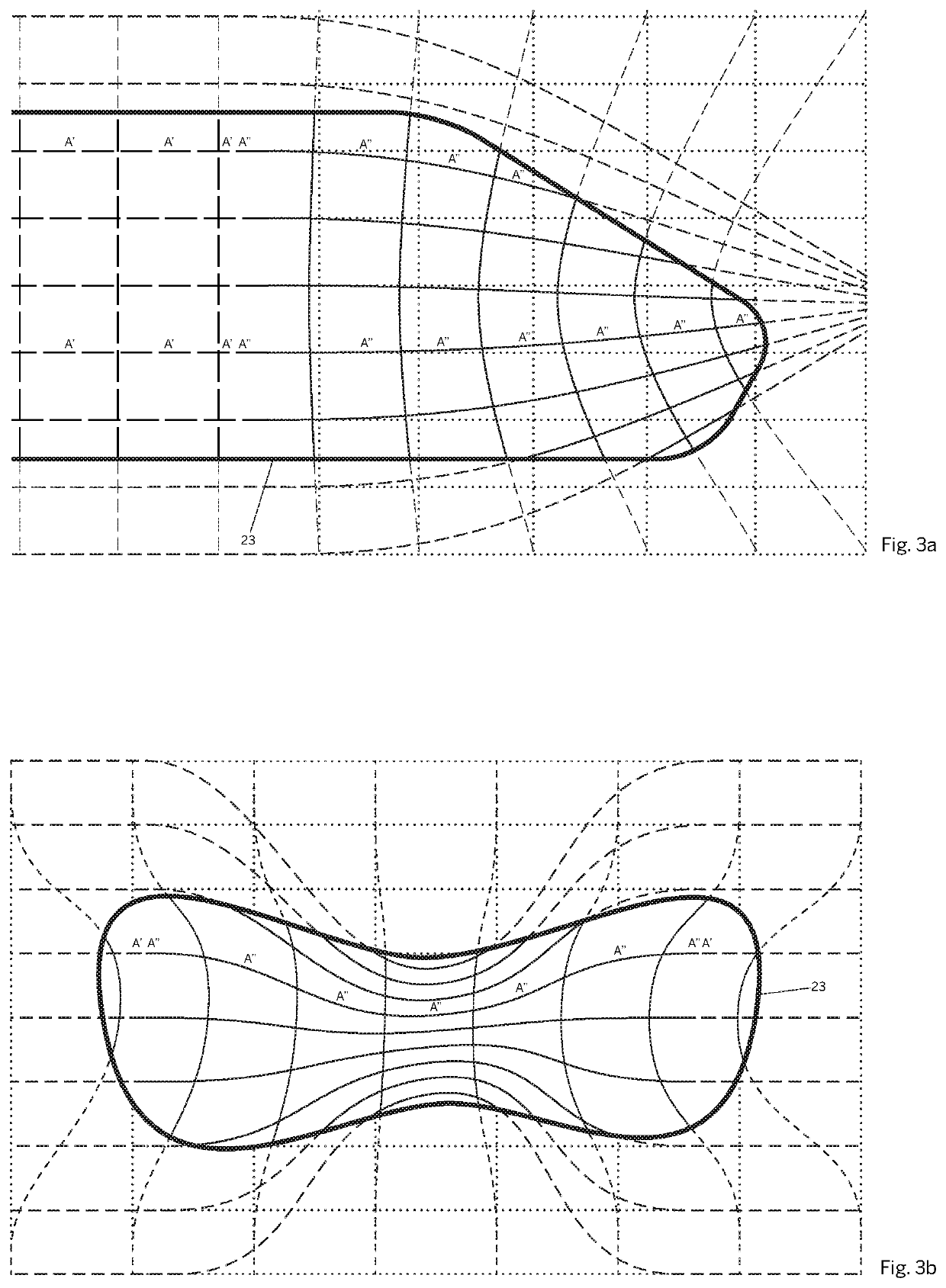Method for the Lightweighting and/or Designing of an Additively Manufactured Article
a technology of additive manufacturing and lightweighting, applied in the direction of manufacturing data acquisition/processing, total factory control, instruments, etc., can solve the problems of large data volume, high network traffic and high computing load, and formation of highly complex articles, which would be very difficult—if not impossible—to build with classical production methods
- Summary
- Abstract
- Description
- Claims
- Application Information
AI Technical Summary
Benefits of technology
Problems solved by technology
Method used
Image
Examples
Embodiment Construction
[0083]FIG. 1A to 1E serve at illustrating some of the method steps of the present disclosure for the lightweighting and / or designing an additively manufactured article by illustrating a step-by-step approach and schematically leading through the various process steps that can lead to a structure according to the present disclosure in a simplified example.
[0084]FIG. 1A shows a cell in the shape of a rhomboid 1 that can be used as the basic starting building block for performing the method of the present disclosure. In a first step, the cell in the shape of a rhomboid 1 with six faces is provided, and in the present example it is composed of six rhomboid faces connected by edges 11 . . . 22 having a total number of twelve edges 11 . . . 22. The cell in the shape of a rhomboid 1 in the present example forms a rhombohedron in which none of the angles between two adjacent edges 11 . . . 22 is right angled. In the context of the present disclosure, the rhomboid shall always be referred to...
PUM
| Property | Measurement | Unit |
|---|---|---|
| Angle | aaaaa | aaaaa |
| Structure | aaaaa | aaaaa |
| Density | aaaaa | aaaaa |
Abstract
Description
Claims
Application Information
 Login to View More
Login to View More - R&D
- Intellectual Property
- Life Sciences
- Materials
- Tech Scout
- Unparalleled Data Quality
- Higher Quality Content
- 60% Fewer Hallucinations
Browse by: Latest US Patents, China's latest patents, Technical Efficacy Thesaurus, Application Domain, Technology Topic, Popular Technical Reports.
© 2025 PatSnap. All rights reserved.Legal|Privacy policy|Modern Slavery Act Transparency Statement|Sitemap|About US| Contact US: help@patsnap.com



